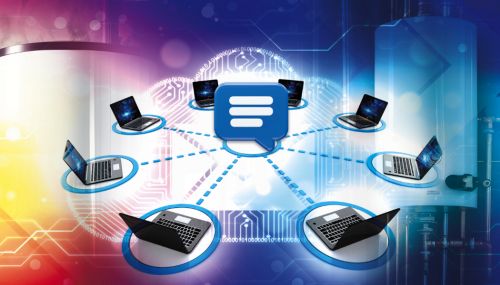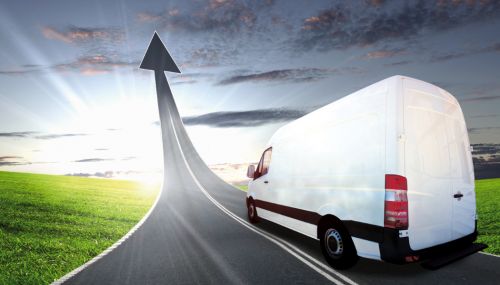All
Going Beyond Online Payments
by Richard Rutigliano, PriMedia

Advanced services to meet the demands of 90% of consumers
Your business was built on customer service. For generations, that meant having long-term employees, often family members, answering the phone and going on service calls. These employees got to know the customers by name, listened to their concerns and responded to their questions. They solved service issues, took payments and provided a personal touch to your business operations.
The basics of good customer service haven’t changed. But as technology has advanced, the idea of good service has changed in the minds of your customers. There will always be a place for caring individuals to respond to customer issues (more on that below). However, in today’s digital reality, most customers prefer online services for standard transactions.
“Most” is not hyperbole. In fact, it may be an understatement: 90% of consumers expect a business to offer an online portal to manage their purchases, payments and concerns. Approximately 60% will start their order or complaint on a portal before contacting your office, and the same amount have stated a preference for an automated portal for simple tasks.
What’s Changed?
We live in a world where food, clothes, major appliances, cars and virtually anything else you can imagine are available and delivered within hours. Consumers of all ages are using online services to make life easier and more convenient. They no longer want to be obligated to take time from their workday to call during standard office hours to make a payment or request service. They expect to be able to pay their bills automatically, or log on to a company portal to review their transaction history, open invoices and make their payments.
Despite this, there are still some business owners who believe that online portals put up a wall between customers and the company. That thinking is stuck in an early 1980s mindset. Let’s refer back to the first statistic: 90% of consumers expect businesses to offer online portals. This includes customers of all ages – the 28-year-old first-time homeowner as well as the great-grandmother who has lived in her home for 60+ years.
Better Service, Better Outcomes
Here’s a brief case study of two similarly-sized PriMedia energy clients, one without a customer portal and one with. Over the course of one year, the company without a customer service portal fielded 3,133 “Contact Us” page requests for information on deliveries, service plans, and other services. All of those required a company representative to respond by email or phone, and often needed additional follow-up communications. On the other hand, the company with a portal experienced only 1,842 “Contact Us” requests, a reduction of more than 41%. At the same time, the company with the portal had customers visit their online account 33,502 times to make payments, look at contracts and price protection, view service information, and more.
With companies of all sizes struggling to find and retain the office and field staff they need and customers demanding more online services, it is simply good business to offer a portal that can increase payments, program enrollments, service interactions and more while reducing the strain on customer representatives and accounting staff.
Smarter Options
Consumers want more than web access from their providers. They want access from their phones. For everything. Your portal needs to be developed to work on smartphones as well as desktop computers.
Statista reports that mobile devices account for 71% of retail traffic and generate 61% of online orders. While this statistic includes all retail, it is one that fuel and home service providers cannot ignore.
Many fuel retailers choose to offer apps that enable customers to directly access the portal from an icon on their phone. Your online services should include digital bill presentment, automatic recurring payments, one-click access to your payment gateway, full payment and billing histories, service and delivery data, and information on and enrollment options for value-added programs such as price protection, budget plans, service agreements, automatic delivery and loyalty plans.
The payment gateway itself needs to be flexible enough to accept a variety of customer payments. In addition to credit and debit cards, you should consider having your portal accept EFT bank transactions, mobile wallets and digital payment options. By offering a wide range of payment options that are available any time of day and eliminating the need for customers to pay by mail or over the phone, fuel retailers see better cash flow as well as reduced staff requirements.
A recent consumer payments survey reported that “Having the option to pay bills with credit or debit cards ranks high on consumers’ ‘nice to have’ and ‘must-have’ lists. Younger consumers have higher expectations across the board, with significant majorities of millennial (28-45 years old) and Gen Z (up to 27 years old) consumers saying debit cards (94%), mobile wallets (82%), and digital payment apps (83%) are ‘must-have’ or ‘nice to have’ for bill payments.”
It is not just the 45-year-old and younger crowd using digital payment services: 22% of Baby Boomers are using digital wallets, Venmo, PayPal and similar platforms.
Don’t Forget Customer Service
As stated earlier, the original definition of customer service – having friendly, knowledgeable representatives available to answer questions and assist with issues – is still vital to your company’s success. Poor customer service remains, and will always be, a drain on profits. Approximately 87% of consumers will leave a company or reduce their spending if they do not receive great customer service.
Again, however, customer service has transformed. Your customer interaction is more likely to begin with a live chat through your website or messaging through social media. The consumer is looking for these options, or at least an easy-to-find “Contact Us” mechanism. Whichever system you choose, entry should be simple. Intro forms and information requirements should be limited to basic customer identifiers, and – wherever possible – pre-filled by your online portal integration. Nearly two-thirds of consumers will refuse to complete a form that asks for too much initial information. Your company responses should be quick and personal. Even if chatbots and auto-responders are collecting the initial information, a “real person” should respond in a timely manner.
Your response will be enhanced by your integrated portal. Customer Service Reps should be able to access the customer’s account through the admin dashboard on your portal. This should give them the same data the customer sees, as well as any internal notes, comments and other important account information. Not only will this speed up response time, it saves customers from having to repeat details that they expect you to already know. If the issue needs to be moved up the chain of command to management, this information and the CSR notes will then be attached to the request. The more that is shared and available in-house, the better the customer service will be … leading to stronger customer relationships and loyalty.
And Even More Personalized Service
Today’s customer welcomes personalized offers and services. Once you go beyond basic online payment options, your expanded integrated customer portal can enable account-specific online messages, texts and emails. These may include reminders for service calls and annual tune-ups, delivery prompts for will-call customers, rebate and promotions for customers with older equipment, and more. Text-to-pay integrations, email click-through to service scheduling, and one-click access to fuel sales platforms are more than “nice” features to offer; they increase sales and strengthen your relationships with busy customers who are looking for the easiest, most convenient methods to manage their home comfort.
Another option we strongly recommend for your enhanced online portal is offering remote service calls. This application is similar to telehealth appointments with a doctor’s office. Developed in response to COVID-19 concerns and the limits on personal interaction during the pandemic, it has quickly become a valuable tool for fuel companies. Remote service calls save time, provide better responses, and increase customer satisfaction. Customers upload videos and provide a written description of the problem, and then schedule a virtual appointment over FaceTime, Google Duo or Zoom. The service tech or manager can diagnose the problem in advance and make sure to bring the appropriate parts and tools needed on the first visit. This significantly reduces the number of trips required and the amount of time spent on each service call.
When it comes to meeting customer expectations, it is clear that online payment processing is just the beginning. Fuel marketers looking to the future will consider expanding their digital services to include multiple payment options and integrated self-service portals that include online sales and fuel orders, price protection enrollment, personalized offers, loyalty rewards, live-chat communications, text, email and in-portal marketing, remote service calls, and more.
Richard Rutigliano is President of PriMedia, a communications firm that develops custom websites and integrated software specifically for home comfort providers. He can be reached at 516-222-2041 or rrutigliano@primediany.com.
Related Posts
 It’s Upgrade Season. Get the Sale.
It’s Upgrade Season. Get the Sale.
Posted on October 16, 2025
 Your Business Rises and Falls by Your Customer Service
Your Business Rises and Falls by Your Customer Service
Posted on September 19, 2025
 Teamwork Makes the Dream Work!
Teamwork Makes the Dream Work!
Posted on August 18, 2025
 Keeping Your Price Protection and Budget Plans Safe in a Volatile Market
Keeping Your Price Protection and Budget Plans Safe in a Volatile Market
Posted on July 28, 2025
Enter your email to receive important news and article updates.
